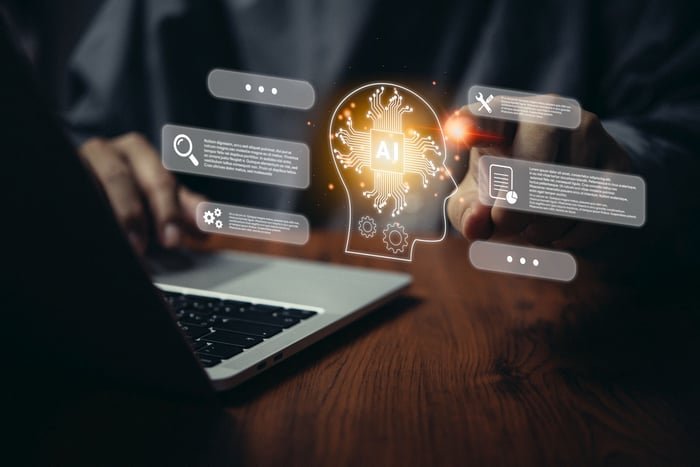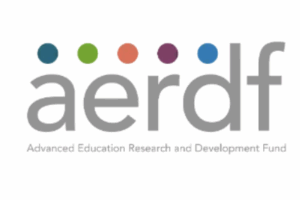AI in Livestock Welfare Monitoring Market
InsightAce Analytic Pvt. Ltd. announces the release of a market assessment report on the “Global AI in Livestock Welfare Monitoring Market Size, Share & Trends Analysis Report By Component (Software [Data Management Platforms, Behavior Analytics Software, AI & Machine Learning Models, Health Monitoring Algorithms], Hardware [Cameras, Sensors, Microphones, Gateways, RFID Tags], and Services [Maintenance & Support, Installation & Integration Services, Training & Consulting]), Type (Wearable Sensor-Based Systems, Thermal Imaging Systems, Vision-Based Systems, Integrated Multi-Sensor Platforms, and Audio-Based Monitoring Systems), Livestock Type (Swine, Poultry, Cattle, Sheep & Goats, and Others), Application (Health Monitoring, Environmental Monitoring, Behavior Analysis, Stress & Pain Detection, Feeding Pattern Monitoring, and Breeding Management), Deployment Mode (On-Premise, Cloud-Based, and Hybrid), Technology (Machine Learning, Edge AI, Computer Vision, IoT & Smart Sensors, and Data Analytics), End-user (Animal Welfare Organizations, Commercial Livestock Farms, Veterinary Clinics & Hospitals, Research Institutes & Universities, and Government & Regulatory Bodies),-Market Outlook And Industry Analysis 2034”
The Global AI in Livestock Welfare Monitoring Market is valued at US$ 2.3 Bn in 2024 and it is expected to reach US$ 11.8 Bn by the year 2034, with a CAGR of 18.4% during the forecast period of 2025-2034.
Get Free Access to Demo Report, Excel Pivot and ToC: https://www.insightaceanalytic.com/request-sample/3149
AI in livestock welfare monitoring seeks to use intelligent technologies to enhance animal health, behaviour tracking, and environmental factors. It uses sensors, cameras, and algorithms to monitor livestock continuously without the need for human intervention.
This technique helps farmers identify early signs of illness, stress, or discomfort, allowing them to take precise action to prevent the spread of disease and boost productivity. The market for AI in livestock welfare management is growing quickly due to the need for efficient livestock management and technological advancements.
The need for sustainable agricultural methods, the growing demand for food as a result of the world’s population, and technological improvements are some of the main causes driving the growth of AI in livestock welfare management. AI helps address these needs by increasing efficiency and productivity, which results in higher outputs with less input.
Additionally, governments and the corporate sector are investing more in smart agricultural solutions as they recognize the potential of AI to transform agriculture and promote food security. This will boost the growth of AI in the livestock welfare management market in the coming years.
List of Prominent Players in the AI in Livestock Welfare Monitoring Market:
• Merck Animal Health
• Afimilk
• Connecterra
• DeLaval
• Vence (acquired by Merck)
• Gallagher Animal Management
• HerdDogg
• Lely
• Allflex
• PrecisionAG (formerly PrecisionHawk)
• Stellapps
• Zoetis
• Tri-Scan (acquired by Zoetis)
• AgriWebb
• Cainthus
• Nedap
• Silent Herdsman (acquired by Afimilk)
• Halo (livestock monitoring Al)
• SmartBow (by Allflex)
• Cargill (livestock Al division)
Expert Knowledge, Just a Click Away: https://calendly.com/insightaceanalytic/30min?month=2025-04
Market Dynamics:
Drivers-
The market for AI in livestock welfare management is anticipated to grow in the future due to the rising demand for livestock products. Livestock products are a variety of goods derived from animals bred for agricultural purposes, including meat, dairy, eggs, and other commodities. Large amounts of data from sensors, drones, and satellite photos may be gathered, analysed, and interpreted by farmers thanks to artificial intelligence (AI) technologies.
Furthermore, improvements in machine learning techniques are driving the AI in livestock welfare management market. The behavior and health of livestock may now be predicted with greater accuracy due to these advancements. Businesses are focusing on developing user-friendly solutions that meet the needs of farmers.
Challenges:
There are many obstacles in the way of integrating AI in livestock welfare management. A primary obstacle is the high upfront cost of AI systems, which small and medium-sized farms may find unaffordable. Additionally, farmers must learn how to utilize advanced AI technology, which requires training and skill development.
Furthermore, because these systems frequently gather and handle vast volumes of sensitive data, worries regarding data security and privacy surface. To fully utilize AI in livestock welfare management, two more issues that must be resolved are technological dependability and the requirement for a strong infrastructure to support AI applications.
Regional Trends:
The region’s strong infrastructure and cutting-edge agricultural technology allowed North America to maintain its leading position in the AI in livestock welfare management market in 2024. The incorporation of AI into different livestock farming operations is further fueled by the fact that North American farmers are frequently early adopters of technology that promises more profitability and efficiency. Further supporting the adoption of AI technologies is the region’s significant emphasis on precision and sustainable agriculture.
The AI in livestock welfare management market in Asia Pacific is growing in strength as corporate parties and governments work to modernize livestock welfare management. Asia Pacific nations such as China, Japan, and India choose cost-effective aluminium solutions designed for intensive animal husbandry. The demand for cloud-based, mobile-enabled Al platforms that function well in a variety of infrastructure configurations is also rising in these locations.
Unlock Your GTM Strategy: https://www.insightaceanalytic.com/customization/3149
Recent Developments:
• In October 2024, Merck Animal Health officially introduced SenseHub Cow Calf, a remote livestock monitoring system designed for cow/calf operations. The solution automatically detects estrus, identifies optimal insemination times, tracks activity and rumination using ear-mounted accelerometers, and delivers insights via cloud-based dashboards to improve breeding efficiency and reduce labor.
Segmentation of AI in Livestock Welfare Monitoring Market-
By Component-
• Software
o Data Management Platforms
o Behavior Analytics Software
o AI & Machine Learning Models
o Health Monitoring Algorithms
• Hardware
o Cameras
o Sensors
o Microphones
o Gateways
o RFID Tags
• Services
o Maintenance & Support
o Installation & Integration Services
o Training & Consulting
By Type –
• Wearable Sensor-Based Systems
• Thermal Imaging Systems
• Vision-Based Systems
• Integrated Multi-Sensor Platforms
• Audio-Based Monitoring Systems
By Livestock Type-
• Swine
• Poultry
• Cattle
• Sheep & Goats
• Others
By Application-
• Health Monitoring
• Environmental Monitoring
• Behavior Analysis
• Stress & Pain Detection
• Feeding Pattern Monitoring
• Breeding Management
By Deployment Type-
• On-Premise
• Cloud-Based
• Hybrid
By Technology-
• Machine Learning
• Edge AI
• Computer Vision
• IoT & Smart Sensors
• Data Analytics
By End-use-
• Animal Welfare Organizations
• Commercial Livestock Farms
• Veterinary Clinics & Hospitals
• Research Institutes & Universities
• Government & Regulatory Bodies
By Region-
North America-
• The US
• Canada
Europe-
• Germany
• The UK
• France
• Italy
• Spain
• Rest of Europe
Asia-Pacific-
• China
• Japan
• India
• South Korea
• South East Asia
• Rest of Asia Pacific
Latin America-
• Brazil
• Argentina
• Mexico
• Rest of Latin America
Middle East & Africa-
• GCC Countries
• South Africa
• Rest of Middle East and Africa
Read Overview Report- https://www.insightaceanalytic.com/report/ai-in-livestock-welfare-monitoring-market/3149
About Us:
InsightAce Analytic is a market research and consulting firm that enables clients to make strategic decisions. Our qualitative and quantitative market intelligence solutions inform the need for market and competitive intelligence to expand businesses. We help clients gain competitive advantage by identifying untapped markets, exploring new and competing technologies, segmenting potential markets and repositioning products. Our expertise is in providing syndicated and custom market intelligence reports with an in-depth analysis with key market insights in a timely and cost-effective manner.
Contact us:
InsightAce Analytic Pvt. Ltd.
Visit: www.insightaceanalytic.com
Tel : +1 607 400-7072
Asia: +91 79 72967118
info@insightaceanalytic.com
This release was published on openPR.























